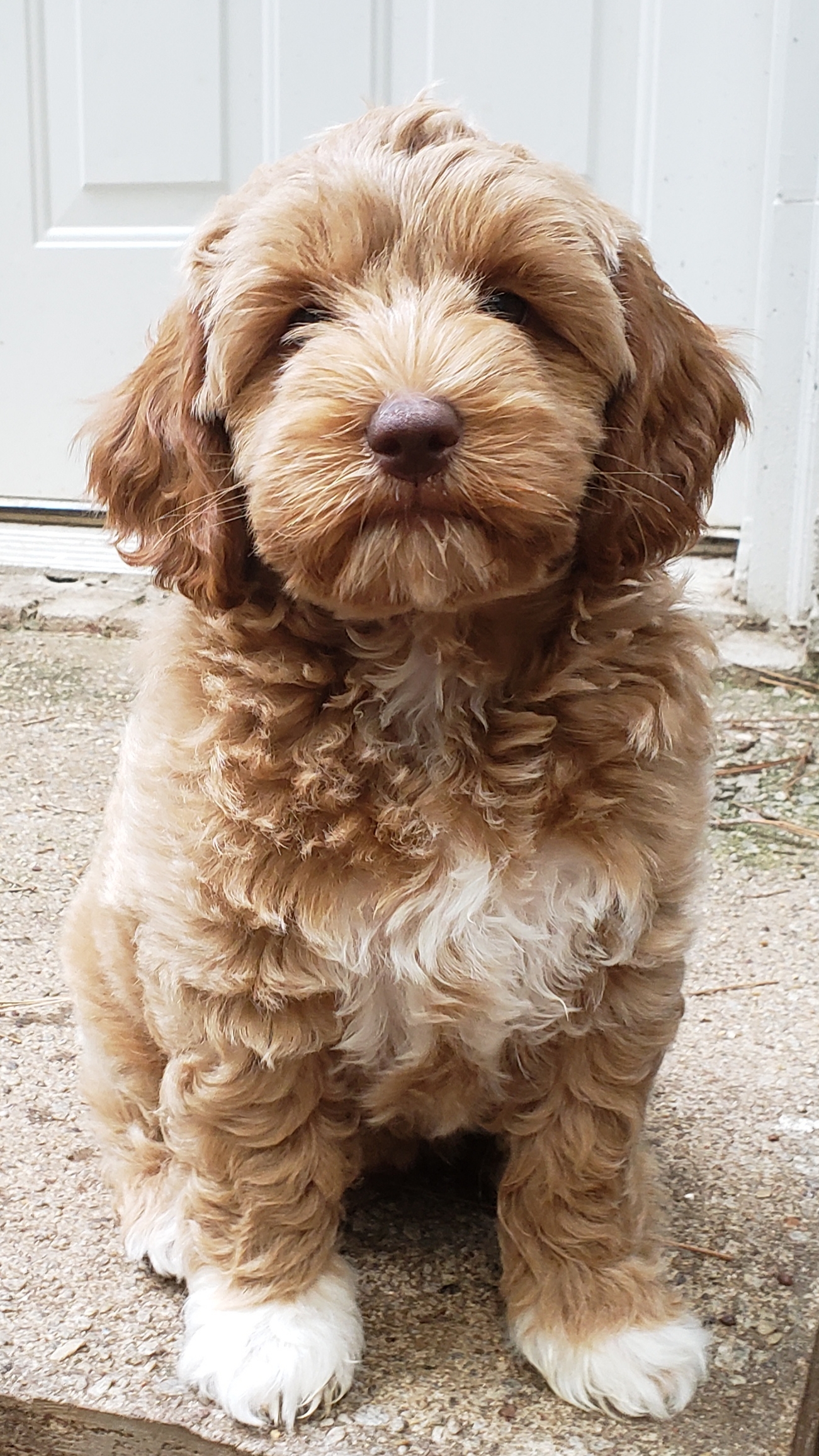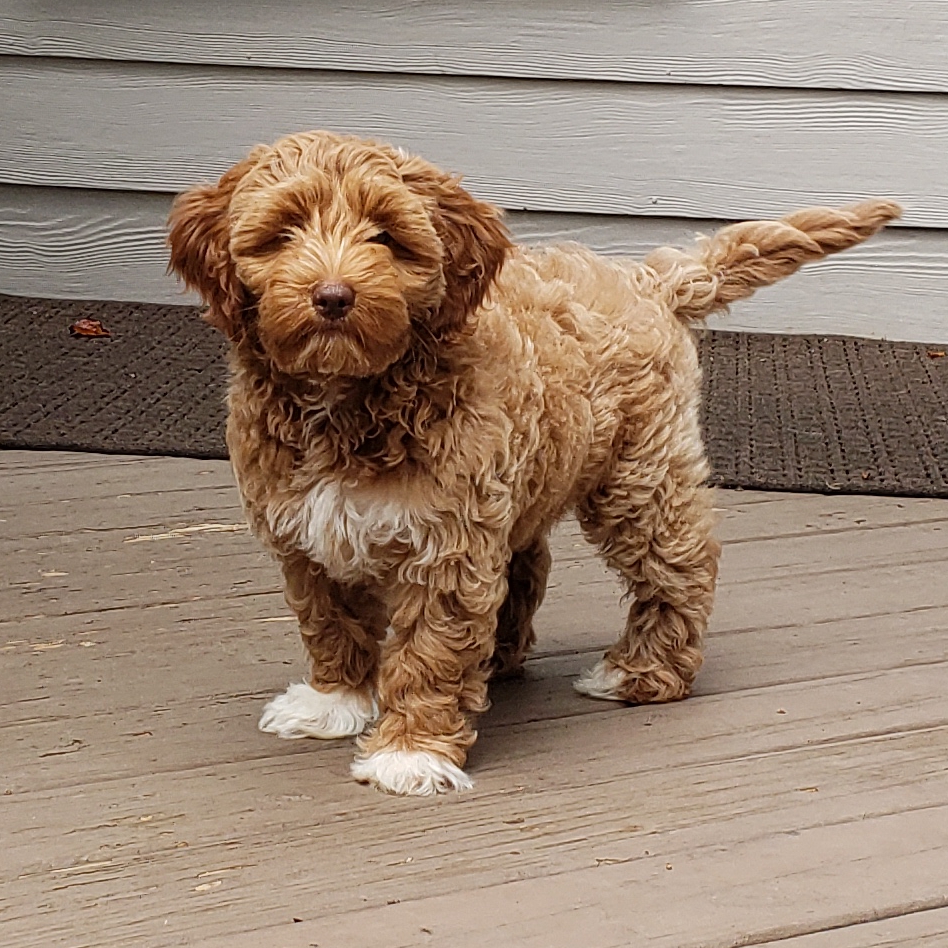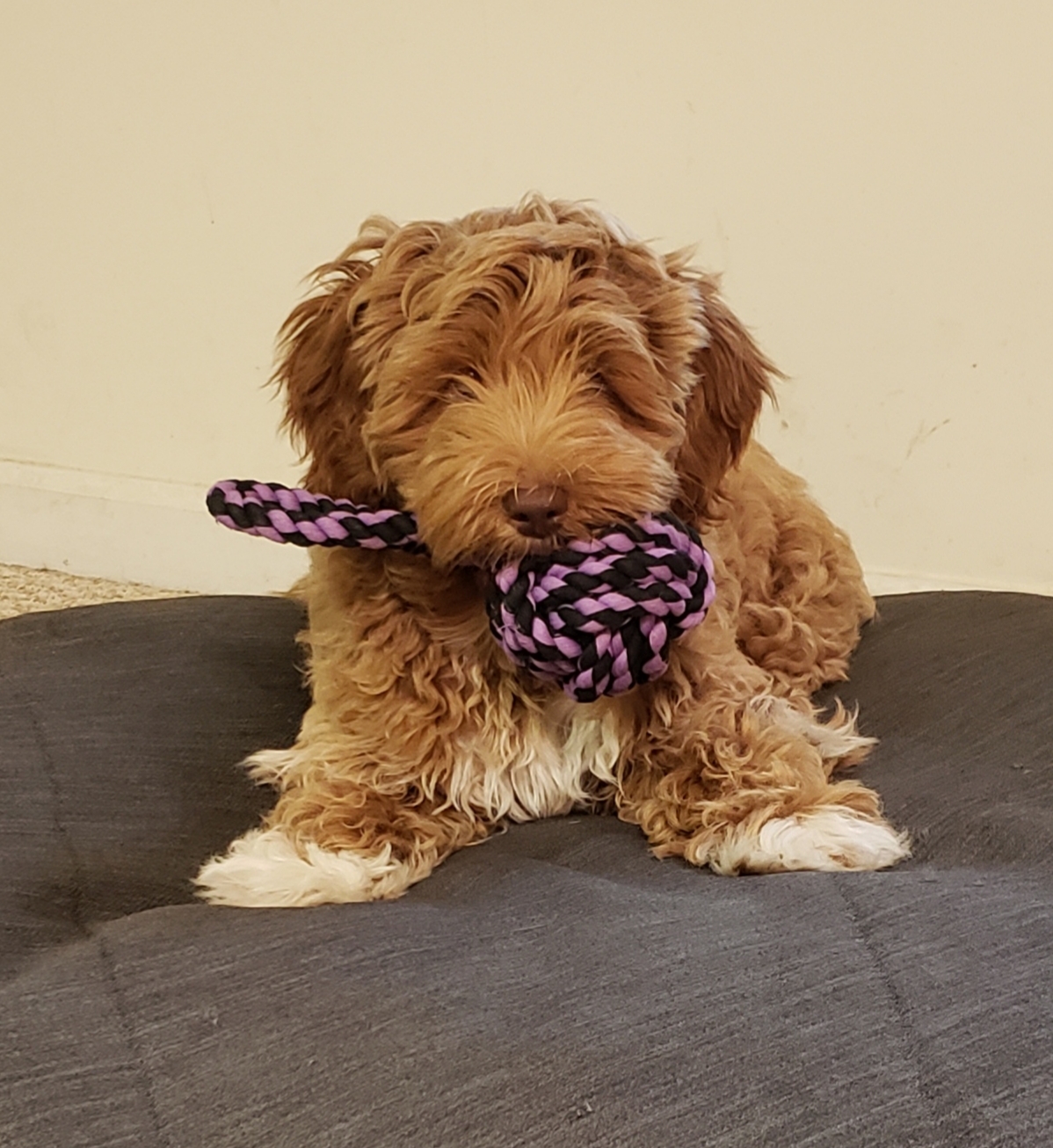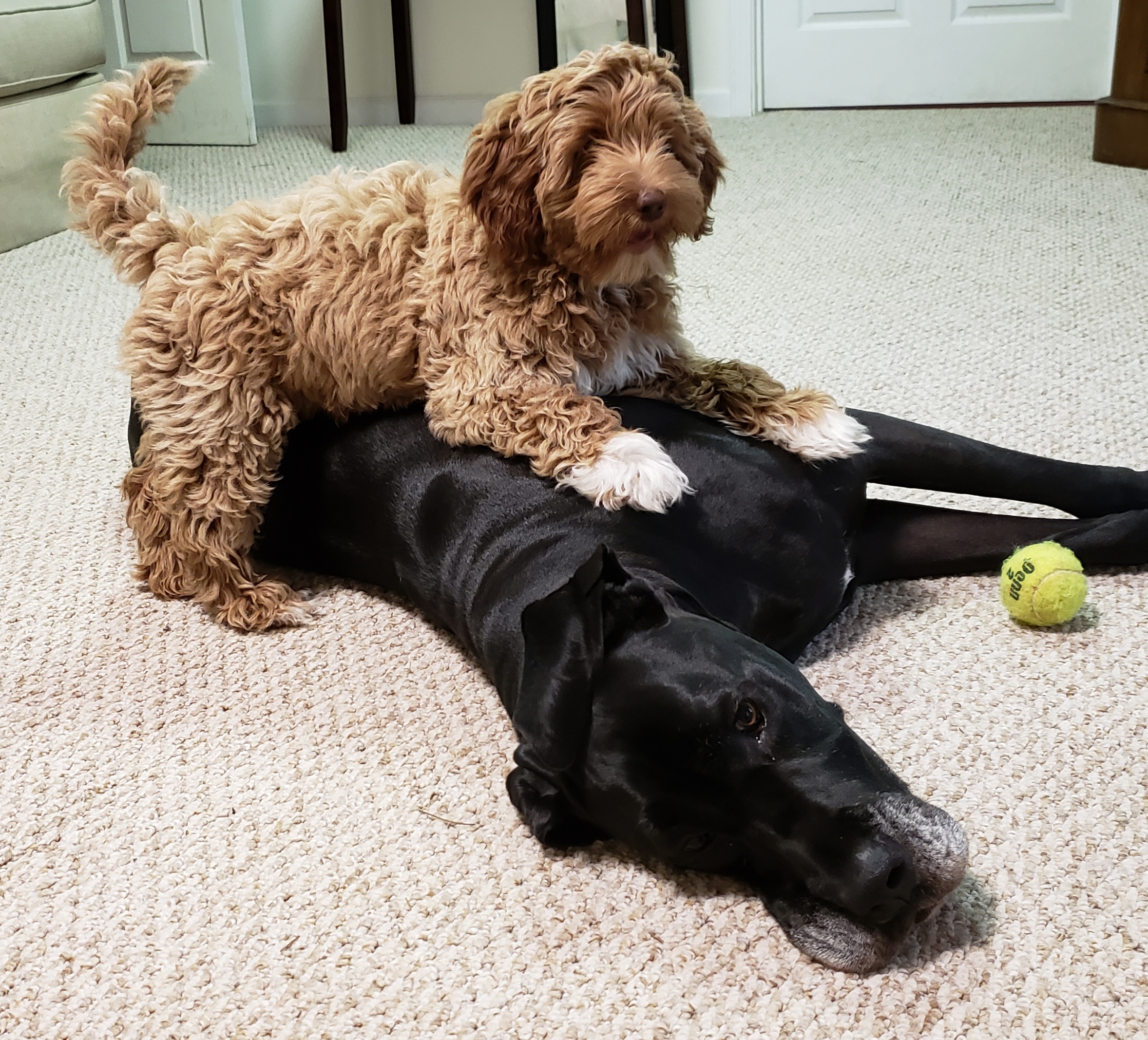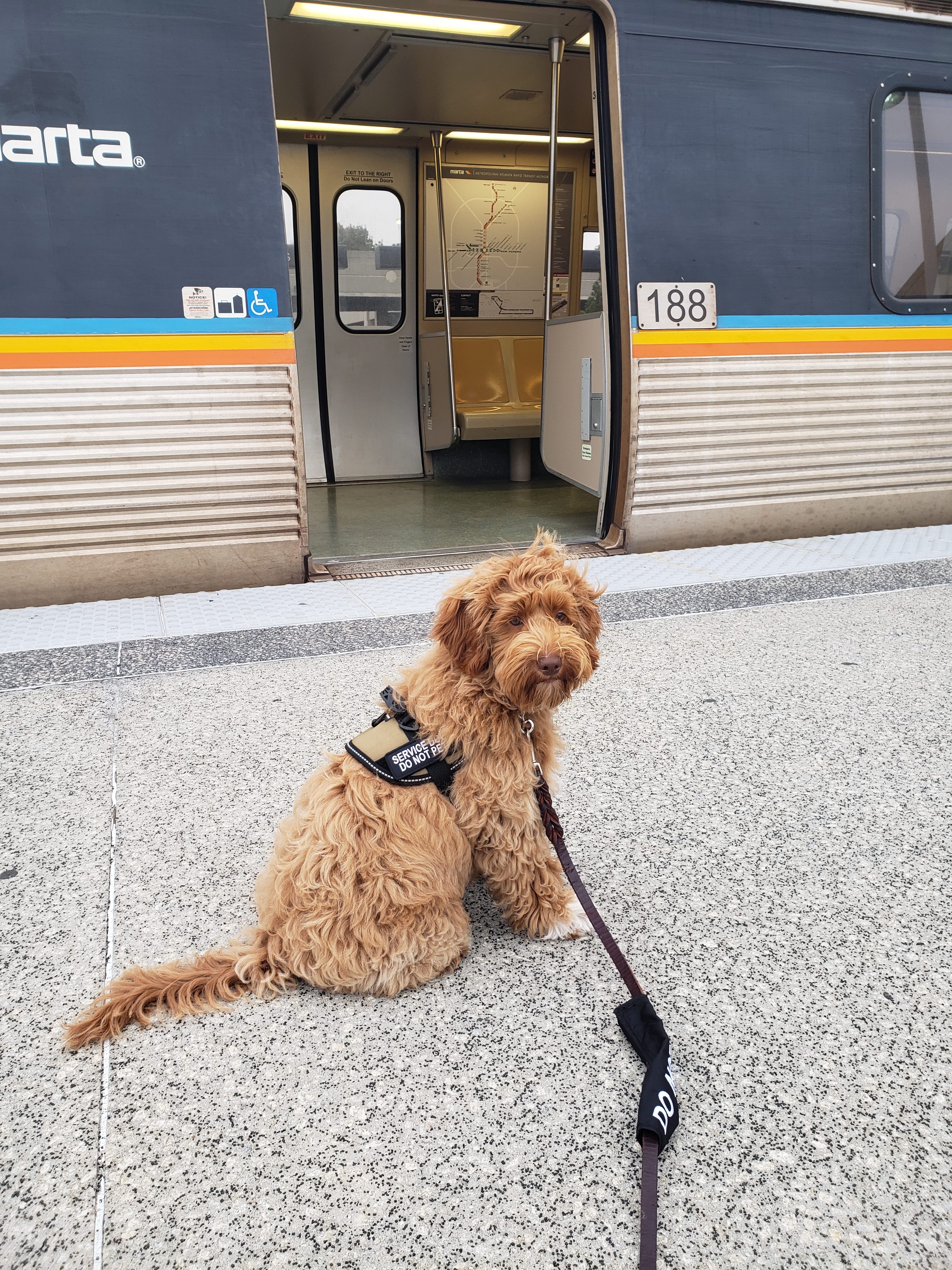Jacob: The Story of a CPT Service Dog Board Train
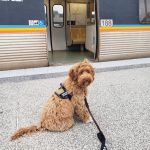
November 21, 2018
Why Julia Needs a Service Dog
Julia is an accomplished professional and a graduate student at an Ivy League university. She is also afflicted with epilepsy, specifically tonic-clonic (grand mal) seizures and generalized absence seizures. In the past 6 months, her epileptic episodes have become more frequent and severe, despite a regimen of anticonvulsant medication that formerly appeared to manage the condition.
Several months ago, after a particularly grievous seizure event, Julia became frightened that she may suffer a head injury, orthopedic injury, or aspiration-related asphyxiation during a future seizure. Consequently, she investigated the acquisition of a seizure alert/response service dog.
• In addition to seizure alert/response dogs, CPT trains a myriad of other service dogs, including dogs for persons with mobility disorders, amputations, central nervous system disease, traumatic brain injury, neuromuscular disorders, orthopedic conditions, autoimmune disease, cardiovascular disease, orthostatic conditions, respiratory disease, endocrine disorders, cognitive disorders, sensory processing disorders, narcolepsy, rare congenital conditions, cancer, diabetes, hearing impairment, autism, and psychiatric conditions.
Why Julia Selected CPT
Julia first investigated nonprofit service dog organizations. However, the waiting list for a dog was 3 – 6 years. In addition, the nonprofits allowed little input regarding the type of dog, size of dog, or training behaviors taught the animal.
Therefore, Julia started searching for alternatives from for-profit companies. She realized that her out of pocket outlay would be greater, since nonprofits often provide service dogs at zero or nominal cost to the recipient, whereas for-profit companies will direct bill her for the entire cost of training the dog. However, Julia felt that the ability to obtain a dog much faster and more to her liking would be worth the expenditure. To arrive at a judicious decision, she diligently read articles, websites, and reviews until she settled upon CPT.
Julia appreciates the customization of CPT’s service dog program and the quality of CPT’s staff . She likes that CPT commences client programs by conducting a detailed medical and personal interview . Therefore, the selection of the candidate dog and the behaviors taught the dog are suited specifically to the nature of her disability and the nuances of her preferences.
She likes the formality and detail of CPT’s service dog contract . This way upon the conclusion of the first meeting her entire program is specified from start to finish and everything is in writing, which achieves the utmost of professionalism. Furthermore, the contract detail improves precision and reduces error as CPT Trainers complete her dog’s education.
Julia relishes the acumen and intelligence of CPT’s staff. Few service dog or pet dog trainers possess the knowledge to conduct the thorough process employed by CPT, including the referenced medical interview.
Julia respects the scholastic and research background of CPT’s founder and Head Trainer, Mark Spivak. Mark has co-authored peer-reviewed research on canine cognition that created novel algorithms for candidate selection and improved established training protocols . Moreover, he remains involved in leading edge, government-funded fMRI and field behavioral psychology research intended to improve the performance of the service dog industry- or at least those companies with the savvy to effectively utilize the research findings.
She admires the scientific evaluation process CPT uses to identify an optimal candidate animal. It is essential that the selected dog possess the temperament, aptitude, and structure most suitable for the working role defined within Julia’s customized program specifications. Like with the draft process in professional sports, acquiring an athlete or candidate animal devoid of a requisite skill set or chemistry limits the benefit of outstanding coaching or training. Consequently, selecting an optimal candidate animal is imperative to achieving goal-level program outcomes.
Julia believes in the superiority of CPT’s home-based board training program that immediately begins educating her dog to develop ideal housebreaking, household manners, basic obedience, and interspecies, intraspecies, and environmental socialization behaviors. Most importantly, Julia agrees that CPT’s customized program design provides the highest probability that upon graduation her CPT-trained service dog will ideally mitigate the limitations and effects of her disability and maximize her quality of life.
The Pre-Training Process
In early April, Julia contacted CPT to supplement the information she acquired online about CPT’s service dog program. In late April, Julia completed her Phase I interview, which designs her contract specifications and profiles the candidate animal optimal for her program. Since Julia resides in the Northeast we conducted the interview via FaceTime. Although we prefer an in-person meeting, FaceTime is an excellent tool when clients reside out of state or in Canada.
Upon the execution of her service dog contract in early May, Julia submitted her initial retainer. CPT then began the dog search process. Soon after, CPT put Julia in touch with a well-respected breeder who expected an upcoming litter of well-tempered Labradoodles within the size range preferred by Julia.
Julia next completed the breeder’s application and submitted a deposit for the stated litter. On July 22, when the litter was 7.5 weeks of age, CPT Head Trainer Mark Spivak visited the breeder to evaluate the 8-puppy litter. After several hours of first-round testing and then a second-round that included only the top 3 dogs, Mark selected a light brown, male puppy, wearing an orange ribbon. Julia named him Harold.
• Although most service dog clients prefer puppies, upon client request CPT will evaluate adult animals from shelters or train existing household pets. Diversity in candidate origin is only one of the many customizable facets of CPT’s service dog program.
• In addition to flexibility in age, CPT will consider a wide variety of breeds, dependent upon the specifications of the client program and client preferences. Nevertheless, all things considered, the breeds most commonly recommended by CPT are Labradoodles and Labrador Retrievers. Yet, CPT has trained service dogs comprising a diverse array of breeds- from a Dachshund mix and a Beagle on the small side to purebred Rottweilers and Great Pyrenees on the large end- and multiple Golden Retrievers., Labrador Retrievers, and Labradoodles in the middle.
Subsequently, soon after Harold was 8 weeks of age and ready to begin his service dog education, Julia visited Atlanta, picked up Harold from the breeder, took him to a local veterinarian suggested by the CPT Trainer, and then transported Harold to the CPT board training site.
• The CPT Board Train Service Dog Program has multiple phases. Phase I is the initial program interview described above. Phase II is the completion of a CPT Service Dog Contract that includes customized program specifications. Phase III is the candidate search, evaluation, and selection process. Phase 4 is the training stage(s). And Phase 5 concludes the program with post-board handler training and continued maintenance.
• In addition to the Board Train Program, there are 2 other CPT Service Dog Programs.In the Hands-On Program we use group class, private instruction, in-home private instruction, and remote private instruction to teach clients how to educate their dogs. In the Combo Program we combine hands-on services with board training, so that there is a board train option when clients fall behind timelines or have difficulty training certain behaviors.
• Consequently, the CPT Service Dog Program features 3 solutions that can meet the needs of persons with varying timelines, preferences, abilities, disabilities, and budgets.
The Stage 1 Board Train Process
On July 30 Harold began his board training adventure. During Harold’s first-stage board train he resided at the suburban Alpharetta home of CPT Trainer Jeanne Hodson. The first-stage board train aims to set a solid foundation for Harold’s later training and overall long-term success. Jeanne’s main objectives were to:
• housebreak Harold, which in CPT parlance means teach him definitively “outdoors good, indoors bad,” so that he will not urinate or defecate inside Jeane’s home or any other indoor environment;
• teach Harold preventive household manners (chewing, barking, jumping, digging, raiding trash, stealing food, stealing objects, climbing on the furniture, bolting, chasing the cat, et al.), so that he learns good habits from the onset;
• teach Harold proper car behavior, so that he learns to calmly and quietly remain reclined in the rear seat or confined within a crate or by a seat belt- the choice will depend upon the vehicle driven by the client- or in Julia’s case her close friends, as she presently is not allowed to drive;
• teach Harold to lay in a down-stay position underneath a seat while transported on public transportation– which will be Julia’s primary mode of transportation in New York City;
• expose Harold to multiple proprioception and tactile sensory stimulation exercises that should maximize his confidence, body awareness, coordination, strength, flexibility, and overall athleticism;
• socialize Harold with humans, dogs, and cats and expose him to multiple public, private, commercial, and residential environments, so that he remains relaxed, without exhibiting anxiety or excitability, when meeting a novel person, dog, or cat or when visiting new places; and
• teach Harold to reliably and responsively perform basic obedience commands (Watch, Come, Sit, Down, Stay, Walk, Heel), Intermediate-level obedience commands (Stand, Stand-Stay, Front, Finish), provided he is a fast learner and we are allotted sufficient time, and Advanced-level obedience commands (all the preceding at a distance, off-leash, and amidst high distractions) if he is a prodigious student and we are provided sufficient time to sapiently progress in sequential manner.
Julia scheduled Harold’s first stage board train for 90 days. The modal duration is 60 days. However, the typical range is anywhere from 30 – 90 days. Because Harold came from an excellent breeder, he was selected with CPT’s scientific evaluation process, he has an excellent temperament, he remains very focused and composed for a young puppy, he enjoys working and training, and we were allotted sufficient time, we were able to accomplish all of Harold’s obedience objectives both on and off-leash and even exceeded many timeline goals.
Upcoming Board Train Stages
Harold is back with Julia now. At the conclusion of Harold’s first-stage board train Julia completed 3 half-days of handler training, so that she best maintains Harold’s progress while together at their residence in Manhattan. Furthermore, to educate the human end of the leash, between the first and second-stage board train Julia will receive frequent email contact and she will schedule periodic Facetime instruction.
On February 25, 2019, Harold will return for a 45-day, second-stage board train. The second stage typically lasts anywhere from 30 – 60 days. During Harold’s second stage board train we will focus on extinguishing any problems that develop between sessions, further his socialization exposures, raise the reliability and responsiveness of his obedience performance, and expand his advanced off-leash obedience and distraction proofing.
Then, after a half-day handler training session, Harold will again go home with Julia. Like before, we will maintain progress with email and FaceTime instruction.
When Harold is 14 months of age he will return to Jeanne or to another CPT Service Dog Trainer for a 3 – 5 month third stage board train. The third stage is Harold’s final training stage. During the third stage we will focus on teaching the assistance tasks specified in Julia’s service dog contract and then generalizing Harold’s assistance, manners, socialization, and obedience behaviors to a diverse set of public, private, commercial, and residential environments that he may encounter in a practical working role. Ultimately, when Harold graduates at approximately 18 months of age, he should possess the knowledge, physical maturity, and emotional maturity to excel as a full-time working service dog.
Future Chapters of Harold’s Story
We will provide periodic text and video updates to Harold’s story as he progresses through each stage. Meanwhile, we hope you enjoyed reading about Julia and Harold and viewing the photographs and videos.
If you have interest in a CPT Service Dog Program or pet training program, we welcome you to contact CPT by email or by phone (404-236-2150). When contacting CPT by phone, please note that CPT office hours are Monday through Friday from 9 am – 4 pm EST.
Please note that the client name in the above article was modified to protect client confidentiality.
(Atlanta, GA)
(Alpharetta, GA)
(Johns Creek, GA)
(New York City, NY)
(Manhattan, NY)

